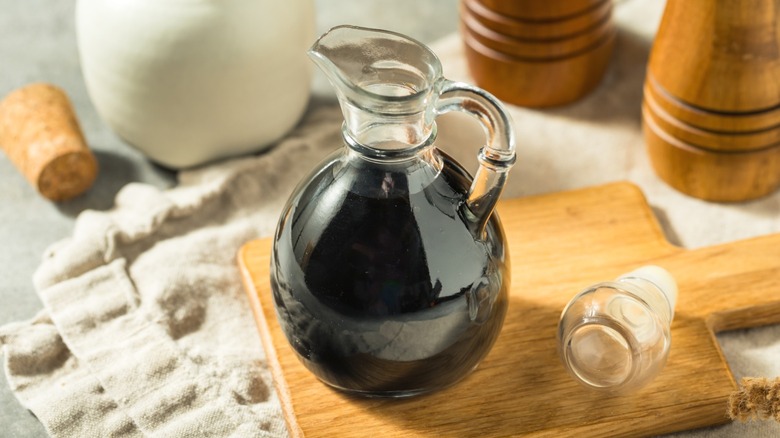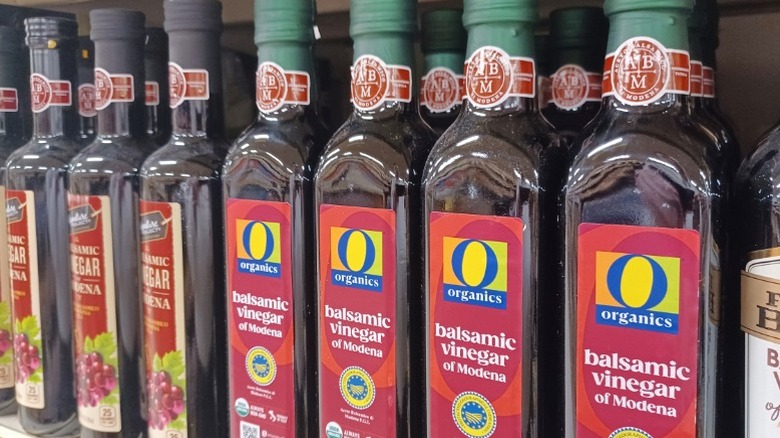What Does The Balsamic Mean In Balsamic Vinegar?
Balsamic vinegar has all sorts of uses, whether you prefer to drizzle some on your tomatoes, or use it to elevate your perfect Caprese salad. You can even use balsamic vinegar to pickle grapes. It's not the kind of vinegar you might throw in with a load of your laundry to keep things fresh; it's a much heavier, more intensely flavored substance than that. A little bit of it goes a long way, but there's no denying that it's is a cherished addition to that part of your countertop where you keep all the nice oils and vinegars — especially if your balsamic vinegar is the real deal.
But why is it called balsamic vinegar, anyway? Was there an Italian kingdom of antiquity called Balsama from which the vinegar originates? Is it kept in barrels made of balsa wood? Was it invented by Old Hollywood character actor Martin Balsam? Okay, probably not that last one. In truth, balsamic vinegar got its name from a resin known for its medicinal qualities — although this resin actually has nothing to do with the vinegar-making process. Rather, balsamic is made using grape must, or concentrated crushed grape juice, and it's a process that dates back centuries.
Balsamic vinegar gets its name from a kind of resin
The "balsamic" in balsamic vinegar has its origins in ancient Rome, where it was called "balsamum" and was used to soothe and remedy various ailments such as migraines. Although the kind of dark, strong-flavored vinegar we know today only originated in the middle of the 18th century, something like it has been made for thousands of years. The word stems from "balsam" — a kind of resin from the balsam tree which was also used for medicinal purposes. This is also, incidentally, where the word "balm" comes from.
As time went on, the vinegar went from a medicine to a sort of luxurious status symbol. Barrels of the stuff were given as gifts to foreign dignitaries, and they were often used as a basis for a bride's dowry. The cities of Modena and Reggio Emilia in Italy's Emilia-Romagna region were particular epicenters for traditional balsamic vinegar production, and they remain so to this day. Because of the high quality, traditional balsamic should not generally be used for cooking – so keep the precious syrupy vinegar for drizzling to appreciate its full aroma and flavor. You can marinate fruits in white balsamic vinegar for a traditional and tasty pairing. Alternatively, use the vinegar to make a simple balsamic glaze which will add a fancy finish to everything from roasted vegetables to grilled meats.

